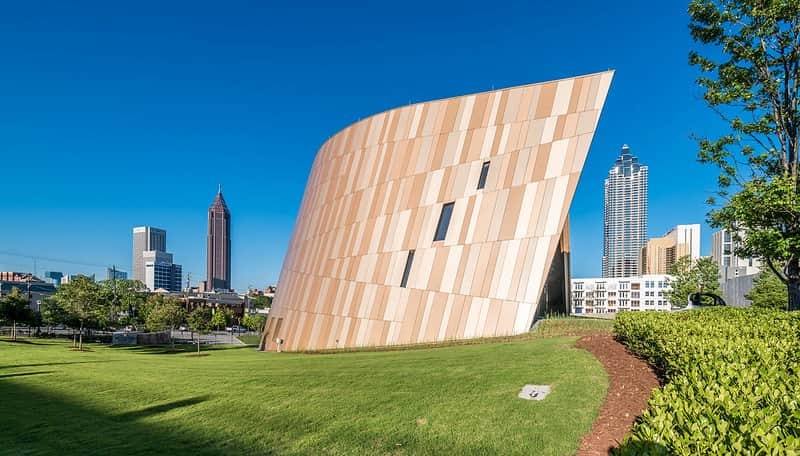Imagine Africans with natural blonde hair and blue eyes! It’s a rare occurrence, but they exist.
Blonde hair is typically associated with Caucasians. However, there’s a population of people with dark skin and blonde hair called the Melanasians.
Become an insider. Subscribe to our newsletter for more top trending stories like this!
So, who’s a black blonde?
Pick your favorite hair dye on Amazon for as little as $8.
Racial Identity: Who Are Melanesians?
The black blondes live in the Southern Pacific Islands (Melanesia). People from the region are all believed to be culturally, historically, and geographically related.
The term Melanesia is derived from Greek to mean Island of black people. The area consists of six Island countries:
- Papua New Guinea
- Solomon Islands
- Vanuatu
- Fiji
- New Caledonia
- Indonesia provinces of West Papua and Papua.
About 5-10% of the Melansians have blonde hair and predominantly inhabit the Solomon. They also have distinct features like blue eyes despite having dark skin. As such often the term Melansiksnas is loosely used to refer to black people with blonde hair. The black-blonde people are believed to have migrated from Africa to the South Pacific 50,000 years ago.
A study by the University of Cambridge in 2007 revealed that the Melanisans are related to the earliest forms of Home Sapiens that migrated from Africa more than 2000 generations ago. However, upon settling on new lands, the Melanasians didn’t interbreed with other earlier forms of humans, like the Neanderthals. They replaced them.
Therefore, they’re undoubtedly black, despite their hair and eye color.
Read Also: Black Culture. 5 Interesting West African Legends
The Genetics Behind the Melanesians
Several theories have attempted to explain why black people have blonde hair. For example, some people attribute it to interbreeding with Europeans, while others claim high fish intake. However, none of these theories are backed by evidence except for genetics.
Melanesians have blonde hair and blue eyes due to genetics. Sean Myles, a geneticist, conducted a genetic analysis. He tested hair and saliva samples from 43 black blondes and 42 dark-haired Melanesians.
His report revealed that the blonde-haired Melanesians carry two copies of a mutant gene known as Tyrosinase-related Protein 1 (TYRP1). This is a gene known to influence pigmentation in humans and mice.
It’s responsible for blond hair, and it was only found in 26% of the Island’s population. Further research found that this gene is distinct from the blonde-causing gene found in Caucasians or Europeans. If anything, Caucasians don’t have the TYRPI gene.
People Also Read: 7 Black Outdoor Organizations Fighting for Diversity
Cultural Significance
The black blondes have a rich culture that they have passed down generations. However, some extreme practices have been faced or watered down due to the influence of modernity and the arrival of missionaries. Some of the cultural practices include:
Religion
The arrival of missionaries to Melanesia has contributed to the spread of Christianity amongst the modern black-blonde people. However, ancestry is still part of the religious practices. The people, especially women, believe in getting assistance from ancestral spirits through magic, sacrifice, and prayer. They, therefore, perform rituals every other day to sustain the community.
Become an insider. Subscribe to our newsletter for more top trending stories like this!
Previously, Melanesians practiced extreme religious traditions like headhunting and cannibalism before it was declared illegal.
Value the Family Unit
Most of these people live along the coast of the Pacific. Unlike other communities that live in villages, Melanesians live in hamlets and homesteads, a common coastal settlement.
They live close to each other for protection against attacks. Other groups live far from the coast, in the mountains, for hunting and agricultural purposes. Their primary plant is sweet potatoes, yams, plantains, spices, leafy vegetables, taro and sugarcane. They also practice fishing for food.
There’s still a fair share of hostility between men and women in the community. For example, amongst the people of Sepik River, men have houses that women aren’t allowed in.
Surprisingly, women are the ones who ensure the continuity of the community. They are the major cultivators, providing food. They also care for children and perform rituals to protect and sustain their people.
People Also Read: Protect Your Melanin: Try This Natural Skincare Routine For Black Skin
Conduct Economic Practices
The coastal region of Melaesains is rich in stones, beads, shells, and salts. The black-blonde people use them to trade with their neighbours.
They also used bamboo to make water vessels for trading, carving knives, and cooking vessels. Melanasians make their bags and fishing nets from bush fibers.
Engage in Social Practices
Melanesians practice body painting. They also wear masks, costumes, and wigs for entertainment and religious purposes. You can experience their love for art through the paintings on their canoes. They use art, music, and dancing to portray their ancestors and mythical creatures. They also practice folktales, myths, and narratives for entertainment.
Against the stereotype, black people can rock blonde hair. As seen in today’s piece, there are black people with natural blonde hair and blue eyes, the black-blonde Melanesian. This challenges some of our notions about race and how narrow our perspective can be.
It gives us perspective on the diversity of people’s genes, appearance, and facial features. We are reminded that Africans comes in different tones and texture. The most important thing we can do is embrace diversity to create a more human-inclusive world. If you want to see a black blonde, visit Melanesia.
People Also Read: Food Security: International Day of Awareness of Food Loss and Waste (IDAFLW)
Nearly 80% of consumers visit directories with reviews to find a local business. List your business for free in our exclusive Spotcovery Black-Owned Business Directory.
Spotcovery offers unique and fresh daily content on Black culture, lifestyle, and experiences. We talk about everything black, black people, black-owned and black-owned businesses. We also deliver authentic and relevant content that will inform, inspire, and empower you! The future of black media is critical to today’s black experience! Our primary audience includes African Americans, Africans, Afro-Caribbean, and people of African heritage. Black culture is for the culture!
Become an insider. Subscribe to our newsletter for more top trending stories like this!





